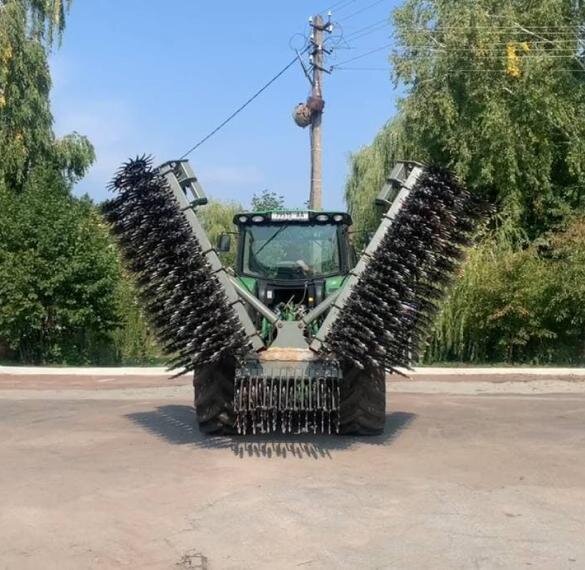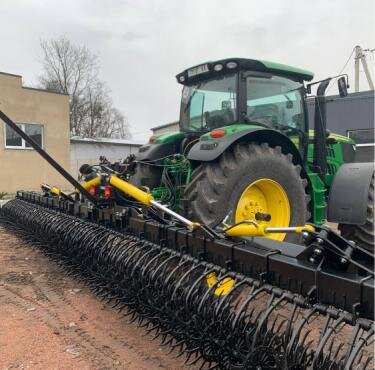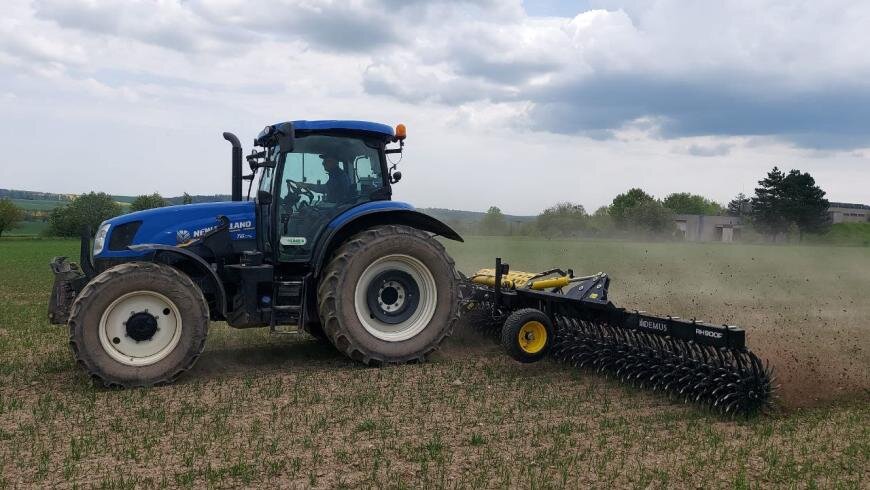
RH900F
The rotary hoe was developed primarily for processing corn crops. Damage to plants during the operation of a rotary hoe on corn is within 1%. The unique design of the working organs of the harrow makes it quite an effective solution for the fight against weeds and soil crust and also promotes nitrogen mineralization of plants in the growth phase up to 15 cm.
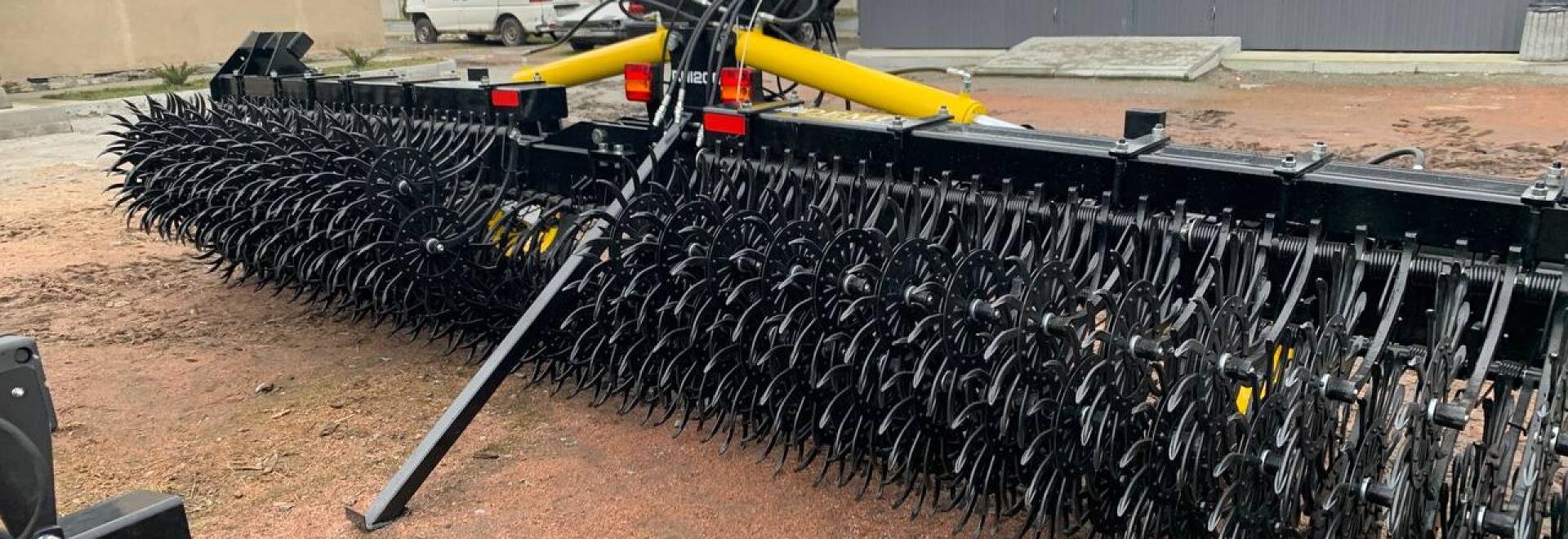
For peas, the loose structure of the soil is one of the most important factors of growth, since nodule bacteria are better settled in loose soil, they can penetrate deep into the soil due to air exchange. Accordingly, it is impossible to allow overwetting of the soil and the appearance of a soil crust for the normal development of the plant.
Sunflower has a fairly wide and deep root system, and thanks to this, it can effectively use the water resources of the soil. Accordingly, the better precipitation penetrates into the soil, the less moisture evaporates. Thanks to the use of a rotary harrow, it is possible to achieve a loose soil structure, which in turn is necessary from an economic point of view, since loose soil absorbs moisture better and promotes faster development of the plant's root system.

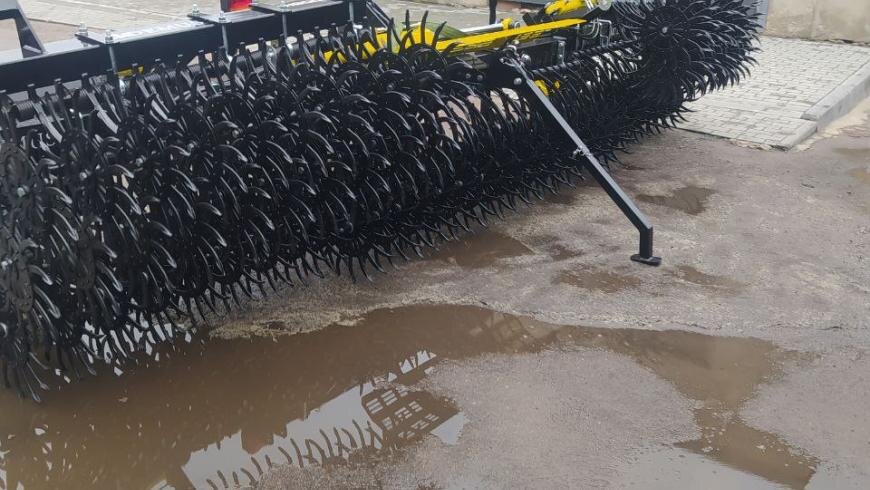
The invention of the rotary hoe dates back to 1890. Thanks to a wide range of possible applications, this machine has been one of the most economical soil tillage machines for more than 120 years. Due to the continuous improvement of the design and the consistent fulfillment of practical requirements to optimize the impact, it is recognized all over the world and successfully used by farmers.
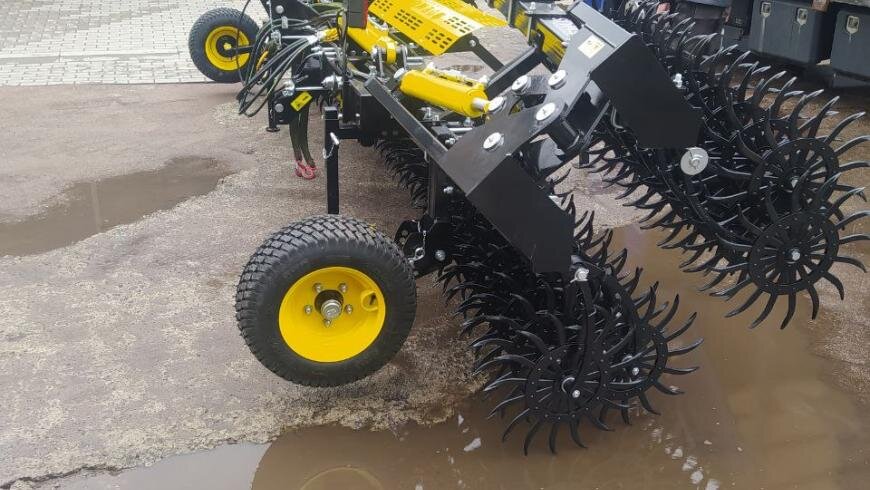
High productivity and compactness of the rotary hoe on the one hand, high working speed, with which the soil can be processed gently and efficiently. On the other hand, it is possible to aggregate the harrow with tractors with a power of up to 120 hp. enables small farmers to cultivate their fields with high quality.
For fastening the working bodies to the frame, only calibrated shafts made of high-quality alloy are used, which minimizes the backlash of the working bodies relative to each other.
The frame is made of Swedish SSAB steel, which, in combination with a paint coating from leading European manufacturers of equipment, gives excellent quality.
Smooth operation of the hydraulics makes it possible to disassemble the unit without jerks and shocks.
The convenient transport width is only 2.2 m, which makes it possible to transport the unit safely and without violating traffic laws.
Each working body is located on a separate spring-loaded hub, which provides an opportunity for high-quality copying of the field surface.

